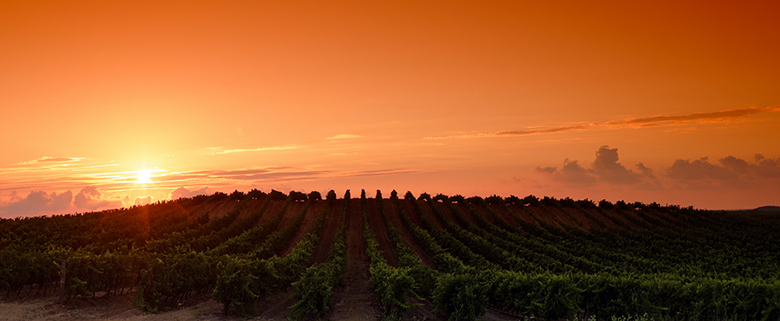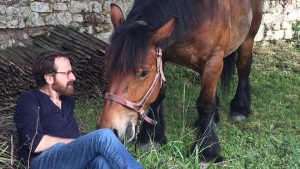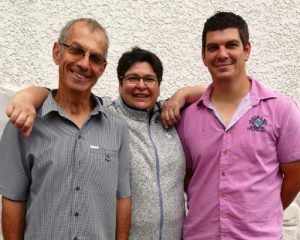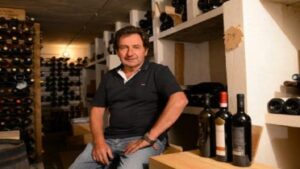
Bordeaux, the Rhône, Provence, Corsica, Languedoc and Roussillon: regions where the 2017 vintage has proven to be somewhat complicated. We’ll help you to navigate this tricky year
Last week, we took a detailed look into how the 2017 vintage fared in the northern regions of France. now we turn to the south, taking you from region to region to analyse the quality of what has been produced.
Bordeaux
It seems the years ending with 7 are never simple in Bordeaux…but fortunately 2017 suffered less than 2007 or 1977. But this was nevertheless a difficult year, with significant frost towards the end of April which caused a 40% loss in production overall in the Bordeaux appellations.
With a very gentle winter there, the vine developed early, and right up until harvest time the vintage acted as it usually has done (it’s one of the five most precocious in the history of Bordeaux wines).
The areas that weren’t hit by frost had hopes for producing a good quality vintage, but a second episode of bad weather, whilst not as severe as April’s frost, threatens to have a negative effect. The end of the season, already lacking in sunshine, unlike in preceding years, has seen heavy rain in the first half of September. In other words, some have been wise enough to harvest most of their grapes before the arrival of the rain, and others have taken more of a risk…the latter had to face a hotbed of rotting which clearly had a unwanted effect on the quality of the wine produced.
It seems that the north Médoc, particularly Saint-Estèphe and Pauillac, has managed to stand out among what has been a rather heterogenous vintage. The south Médoc, Graves and Pessac-Léognan, like the majority of appellations on the right bank, had more difficulties. However this hasn’t prevented some of the more high-quality domains – those which are more demanding in their grape selection – from producing some beautiful bottles, though not quite to the same standard as 2016, 2015 and even 2014. Even the best among these are to be uncorked a bit earlier, certainly earlier than the 2015 and 2016 vintages.
The whites, as is often the case in years when the harvest has had to happen sooner, have turned out very well overall, since their harvest precedes that of the reds. Lively and aromatic, they are particularly charming. It’s still too soon to make a definitive judgement on the quality of the dessert wines, but the conditions were right at the point of harvest for the domains to produce fine Sauternes and Barsacs.
Right bank reds: 15/20
Left bank reds: 16/20
Dry whites: 16/20
Sweet whites: 17/20
North Rhône Valley
Will the vineyards of the northern Rhône buck this year’s trend? The region has always succeeded in the infamous vintages ending in 7 when the rest of France hasn’t had so much luck. The Rhône’s northern appellations have been very successful, particularly the reds, in the 2017 vintage. No damaging frost, no devastating hail, the only problem was the sun control and the drought. This didn’t pose any great problems, apart from slightly reduced yields due to grapes that were rather small – nevertheless they were also thick and healthy with concentrated juice. Ideal for characterful red wines with lovely, ripe tannins. And this will be the case for all of the northern appellations, from Côte Rôtie to Cornas.
On the other hand, the white wines of the region don’t appreciate such hot conditions and have produced a less interesting vintage than in 2014, 2016 and of course the very sunny 2015 vintage.
Reds: 17/20
Whites: 15/20
See all of our North Rhône wines
South Rhône Valley
In the southern Rhône, the reds are perhaps a bit less homogenous than in the north. Châteauneuf-du-Pape nevertheless produced a fantastic vintage, not as exceptional as the 2016, though we still find deep wines that aren’t too marked by alcohol, endowed with a beautiful finesse when the winemaker used a gentle hand during vinification. Unsurprisingly, the other southern appellations deserving of a mention are the same as usual: Gigondas, Cairanne and Beaumes-de-Venise. The others are a bit more heterogenous, but from domains of the same quality as those cited above. The whites, produced less in the southern Rhône, have turned out better than their cousins in the north, with some lovely cuvées from Châteauneuf-du-Pape and Cairanne.
Reds: 17/20
Whites: 16/20
See all of our South Rhône wines
Languedoc
A winemaking region as vast as the ensemble of appellations in the Languedoc could never experience entirely homogenous weather conditions in one vintage. Nevertheless, broadly speaking, we can say that when it comes to the reds, 2017 appears to be slightly superior to 2016. Even though the summer was once again very dry, winter and spring provided enough precipitation and water reserves prevented the vines from suffering too much. If the huge appellation of Corbières is always quite heterogenous, Faugères, Terrasses du Larzac, Saint-Chinian and Pic-Saint-Loup managed to create some lovely reds, to cite only the bigger successes. And don’t forget that the most marvellous cuvées of these wines, often already deliciously perfumed in their youth, benefit from aging of more than 10 years in order to settle and become more complex. Without taking away any merit, the whites are a notch below the general success of the reds and you should seek those originating from higher altitudes.
Reds: 17/20
Whites: 15/20
See all of our Languedoc wines
Roussillon
Like its neighbour, Languedoc, Roussillon benefitted in 2017 from better conditions than those seen in 2016, despite notable drought, since the water reserves replenished in the winter and spring allowed the vines to overcome this dryness. It was the red wines that gained the most from these conditions, giving juices that were fine and delicate but concentrated with an added fleshiness/body compared to the preceding vintage. This is not quite as true for the whites, apart from those produced in theoretically less prestigious appellations, such as IGP Côtes Catalanes and Vins de France. Be careful not to be led simply by the prospect of an AOC – this is not always a guarantee of quality. Several of Rousillon’s prestigious cuvées (with well-deserved renown!) are not released under the names of Côtes du Roussillon and Côtes du Roussillon Villages…
Reds: 17/20
Whites: 15/20
See all of our Roussillon wines
Provence and Corsica
As the years pass, they all look the same in Provence, and yet again drought was the prominent feature of 2017. This series of particularly dry years will end up posing big problems for winemakers in Provence who don’t know what to do any more. With water stress and decreasing yields, there is reason to be worried. What’s more is that 2017 was especially precocious and the harvesting period (from mid-August) was still very hot, forcing several domains to harvest during the night into the small hours. At least the health of the vines was perfect. With the water stress, some reds offer slightly hard tannins, but the best producers of Bandol succeeded with great cuvées, undoubtedly not as long-lasting as preceding vintages. In these conditions, the rare white wines of Provence will not be at their best, except some domains well-known to enthusiasts such as Palette and Baux de Provence.
Corsican vineyards were especially affected by persistent drought in 2017 which particularly touched the whites, more precocious than the reds, with the latter being made of varieties that have more time, after the end of summer rain, to perfect their maturity. Patrimonio, as always, offers the best homogeneity with numerous top-quality domains, but some reputed properties in other Corsican appellations are reaching the same standard.
Reds: 16/20
Whites: 15/20



